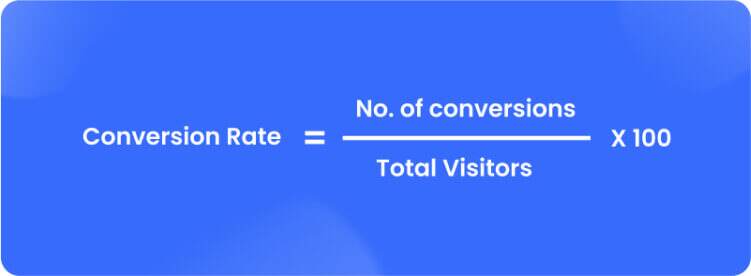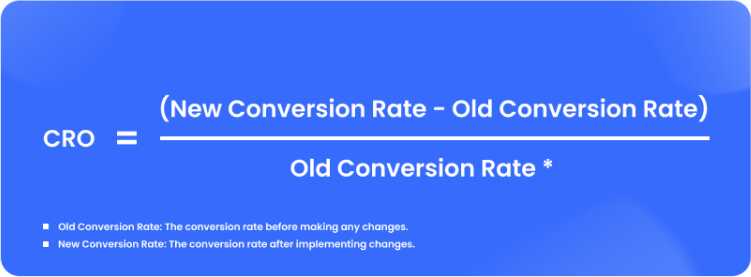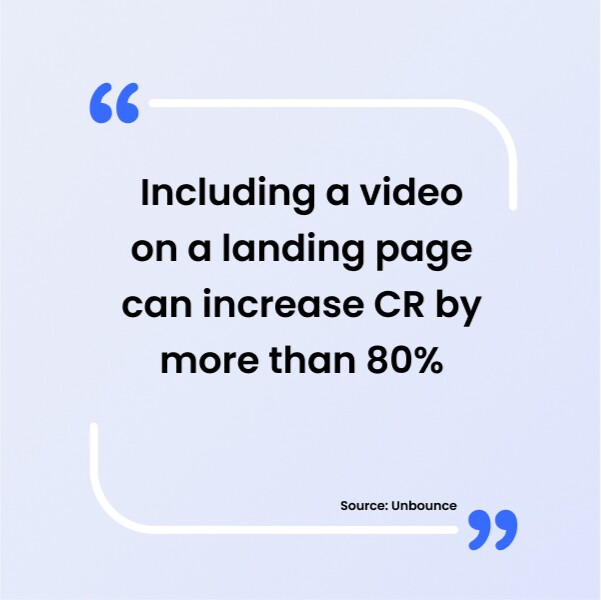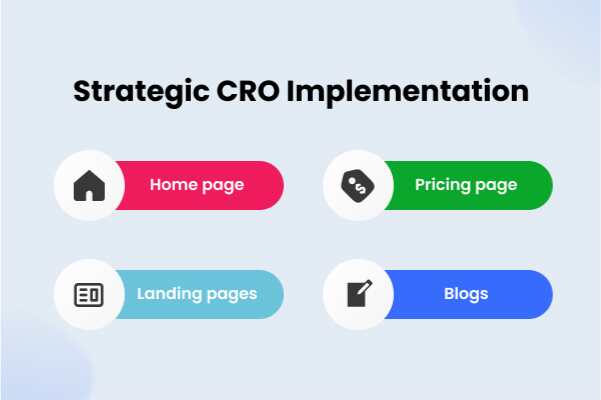When business owners converse about their vital marketing metrics, the conversion rate almost invariably ranks among their primary concerns. This is entirely justified, as the quantity of individuals who browse through your online store and ultimately complete a purchase plays a pivotal role in determining the online store’s prosperity.
Nevertheless, enhancing this rate is more complex than mere words suggest. It is essential to comprehend the methodology for its calculation, strategies for its enhancement, and the variables that shape what qualifies as a satisfactory conversion rate for your specific context.
Are you familiar with the saying “analysis paralysis”? It refers to the idea that an excess of choices can impede an individual’s capacity to arrive at a decision. This phenomenon can also affect visitors to your website when there’s an abundance of focal points or a perplexing design, causing confusion and indecision.
If your objective is to expand your business through digital marketing, monitoring the conversions from your marketing campaigns is a compulsion. This practice assists in fine-tuning your marketing strategies, enhancing the impact of your content marketing, and gaining deeper insights into the actions of those who abandon their carts following a specific Facebook advertising initiative.
Utilizing appropriate web analytics and conversion tracking software like Google Analytics empowers you to convert a greater proportion of your website visitors into actual customers.
For companies, concerns about the bottom line are common. A heightened conversion rate translates to reduced expenditure on marketing endeavors while simultaneously acquiring more customers.
Hence, it’s very important to comprehend the concept of a conversion rate, master its calculation, and explore strategies for its augmentation. Fortunately, numerous techniques exist to enhance your conversion rate, ultimately amplifying your profits. Let’s dive into this topic further!
What is a Conversion Rate?
A conversion rate represents the proportion of visitors who successfully perform a specific action, such as filling out a web form, enrolling in a service, or buying a product.
A strong conversion rate indicates that your website is skillfully crafted, structured in a compelling manner, and resonates with your intended audience. Conversely, a low conversion rate might stem from numerous factors linked to either website functionality or design. Lagging loading speeds, a broken CTA form, or ineffective copy that fails to communicate the offer’s value are typical causes behind an inadequate conversion rate.
What is a Good Conversion Rate?
The definition of a “favorable” conversion rate depends upon factors such as your industry, specialization, objectives, traffic source, and the demographics of your audience, among various other considerations.
If your conversion rate falls beneath your desired level — perhaps ranking below the industry average, trailing your leading rivals, or failing to meet your set objectives — it signifies a need for optimization.
Conversions are viable across various sections of your website: spanning from your homepage and pricing page to your other resources like blogs, landing pages, and beyond. To fully harness the capability of transforming website visitors into paying clientele, proper optimization is essential for each of these areas.
Conversion Rates Demystified: Why They Matter
Assessing the efficacy of your marketing endeavors requires an understanding of the level of engagement they generate. The conversion rate, which juxtaposes the count of customer responses with the overall volume of contacts, stands as one of the most valuable and precise metrics in this regard.
Consider this scenario: Suppose you gained 50 newsletter sign-ups in the past month, and you want to celebrate. But hold on, your perspective may change after you realize that these 50 sign-ups emerged from a pool of over 50,000 website visitors. This equates to a mere 1% conversion rate, signifying the necessity to start refining your content.
Conversion rates also furnish insights into the effectiveness of your segmentation endeavors. Having an understanding of your conversion rate empowers you to craft enhanced marketing campaigns for platforms like social media and other channels, to target particular users categorized by diverse criteria such as location, interests, and more.
How to Properly Calculate the Conversion Rate?
Calculating the conversion rate is an easy process accomplished by dividing the quantity of conversions by the number of visitors, followed by multiplying the outcome by 100 to obtain a percentage.
Once you have a clear understanding of your definition of a conversion, the process of calculating your conversion rate becomes easier. You simply input two values and then perform multiplication by 100.
Imagine you’re finding a conversion metric for email signups, and your website features an opt-in form on each and every page.
In this scenario, you would take the total count of form submissions, divide it by the overall number of website visitors, and then multiply the outcome by 100. For instance, if you garnered 500 form submissions and had 20,000 visitors in the last quarter, your resulting conversion rate would be 2.5%.
You can repeat this procedure for every potential conversion point within your website. It’s important, however, to exclusively tally the visitor count on the specific web pages where the offer is presented.
For instance, if you want to find out the conversion rate for your ebook offer, you will divide the complete count of downloads by the number of individuals who visited the web pages featuring the ebook offer.
Apart from that, you can also determine the comprehensive conversion rate of your website by dividing the combined count of conversions from all conversion opportunities on your site by the total number of visitors to your site.
What is Conversion Rate Optimization (CRO)?
Conversion rate optimization, abbreviated as CRO, involves enhancing the proportion of users or visitors on a website who successfully perform a particular action, aiming to amplify the quantity of generated leads.
You can do it through enhancements in content, conducting split tests, and refining workflows. The outcomes of conversion rate optimization encompass the generation of well-qualified leads, augmented revenue, and decreased costs for customer acquisition.
The CRO Formula
The calculation for Conversion Rate Optimization (CRO) involves measuring the impact of changes made to improve the conversion rate on a website or a specific action. The formula for calculating CRO is:
This formula helps you quantify the improvement in conversion rate percentage resulting from optimization efforts.
Conversion Rate Surge: Strategies to Drive Higher Conversions
It’s crucial to keep in mind that there’s always room for improvement. If you’re aiming to enhance your conversion rate, you might consider exploring conversion rate optimization (CRO). In essence, this involves examining why your website or content isn’t leading to conversions and subsequently devising solutions to address the issue. Here are a few methods you can employ to evaluate your content for the purpose of optimizing the conversion rate.
-
Condense Your Forms
Users often fail to complete your desired actions due to obstacles in the process such as filling up a lengthy form, which tends to deter visitors from engaging. Your responsibility lies in reducing reluctance rather than fostering it. Just make your forms shorter and streamlined to instill confidence in your audience. Moreover, since these abbreviated forms require less time to fill, users are more inclined to finish them.
-
Integrate Social Proof
According to findings from Reevoo, the inclusion of customer reviews or social proof can lead to a notable 4.6% enhancement in conversion rates, effectively augmenting the likelihood of successful sales.
The study conducted by Canvas8 in partnership with Trustpilot also revealed that 49% of consumers regard positive reviews as among their top three factors shaping purchasing decisions. There is no question that your reputation and online visibility directly influence your conversion rate. This is why it is very important to incorporate social proof on your website.
Furthermore, it’s advisable to integrate testimonials and reviews directly onto your website, eliminating the need for visitors to navigate to an external platform.
It should be evident that your customers have derived satisfaction from utilizing your product or service. If you fail to convey this message, your conversion will suffer for sure.
-
Monitor User Engagement on Your Site
Enhancing your conversion rate can prove challenging if you lack a comprehensive understanding of user interactions with your website.
However, how can you pinpoint where visitors encounter difficulties? Utilizing website analysis tools enables you to access screen recordings depicting users’ activities on your site. These recordings provide insights into their navigational choices, whether they overlook certain offers, or if they discontinue form completion midway.
Moreover, these analytical resources should also encompass heat maps that illustrate which components command attention and what draws users’ gaze.
Tools such as Crazy Egg, Google Analytics, or HubSpot‘s website grader are invaluable for identifying your strengths and diagnosing areas of improvement within your site. Additionally, it’s crucial to compute your average conversion rate and delve into the reasons behind visitors’ lack of conversion on your platform.
-
Implement Live Chat and a Chatbot
Users are coming to your website. Isn’t it great if you keep someone there who can personally greet them and offer assistance before they even ask for it?
Here, chatbot and live chat software come into the picture. These customer engagement platforms let you offer instant assistance on your website, mobile app, and other social media platforms. AI chatbots are there to automate your whole business operations including customer service.
There are many live chat software and chatbots available in the market to choose from. Here I would like to recommend REVE Chat and REVE Chatbot for your consideration.
REVE Chat is an omnichannel customer engagement platform that lets you offer instant assistance to users on your website, mobile app, and other customer engagement channels like Facebook, Viber, Telegram, Instagram, and WhatsApp. It has huge features that can easily help your customer support team to offer the best services to the users.
All your customer support members are busy assisting others? No worries, REVE Chatbot, an AI-powered customer engagement tool is there to automate your whole customer support. It can handle multiple customers at the same time and offer instant assistance.
REVE Chat offers a 14-day FREE TRIAL to try all the unique features. So, SIGN UP today!
-
Experiment with Your Promotions
At times, it might seem as though you’ve checked every aspect thoroughly — crafting compelling copy, integrating social proof, and fine-tuning your forms — and yet, the desired conversions remain elusive.
In such scenarios, it becomes imperative to turn your attention towards your content offers. Are they in sync with your target audience? Do they possess a captivating and imaginative appeal? Do these offers logically resonate with the context of the pages where they got uploaded? Well, it’s time to carefully address these inquiries. Concrete and captivating propositions always perform better than a generic offer.
-
Execute A/B Tests
Determining the efficacy of different elements can be a challenge. In such instances, resorting to A/B tests is recommended.
Explore various aspects like headlines, colors, copy, layout, and calls to action (CTAs) to understand what resonates with your audience. Embrace inventive experimentation in this process. For instance, you could try out a totally new call-to-action (CTA) or completely change how your message is presented.
-
Develop Email Campaigns for Abandoned Carts
Have you ever been on a website, put something in your shopping cart, and then decided not to go through with the purchase? We’ve all been there, and this suggests it’s likely happening on your website as well.
It’s important not to overlook these potential customers. When someone leaves items in their cart without completing the purchase, they should receive an email campaign focused on abandoned carts. By employing this sort of email campaign, you’ll send users a reminder regarding the items they left in their cart, follow up with them, and potentially even provide a discount or special offer. Neglecting to send such emails could result in missed opportunities for conversions.
-
Add Multimedia Components to the Landing Pages
Have you experienced a situation where you’ve placed an order at a restaurant, and upon receiving the dish, it appears entirely different from what you had envisioned? Similarly, it’s crucial to prevent such instances when individuals download your content offers. To clear such confusion, ensure that your landing pages incorporate visuals and videos showcasing your product or service.
Integrating multimedia components not only instills a sense of reliability in your website but also aligns with the favored method of content consumption. To enhance your average conversion rate, consider augmenting your website with images featuring graphs and charts, along with video-based testimonials.
-
Craft Compelling Calls-to-Action
An essential element of driving conversions involves your call-to-action (CTA). Your CTA might involve actions such as downloading an offer, sharing a social media post, or subscribing to your email newsletter. No matter the specific action, it’s crucial to incorporate CTAs consistently across your website and landing pages. This typically entails making them explicit and conveniently reachable.
Usually, a single call to action can be featured multiple times on a landing page. For instance, in a blog post, there can be three CTAs directing to a single offer. These CTAs should be positioned at the page’s bottom, integrated into the introductory text, and presented as a pop-up when scrolling down.
It’s advisable to introduce a CTA as early as possible on a page. This way, there’s a reduced likelihood of visitors who don’t scroll down extensively to overlook the conversion opportunity entirely.
-
Enhance Your Page Loading Speed
Around 73.1% of web designers feel that not having a mobile responsive design is a main reason why visitors leave a website. Particularly on mobile devices, even a one-second delay in page responsiveness can lead to a 7% decrease in conversion rates.
For mobile conversion, a significant challenge revolves around page speed, which signifies the duration required for your content to display on the screen. If your mobile page isn’t achieving satisfactory conversion rates, it’s advisable to assess its page speed utilizing Google’s PageSpeed tools, which evaluate the speed of your mobile page.
To enhance your page loading speed, you need to also reduce and compress the size of images as well. Moreover, your website also has to be mobile-responsive.
-
Optimize for Mobile Devices
Do you know that mobile phones contribute to 70% of web traffic and around 80% of smartphone users are more likely to make purchases from companies that have user-friendly mobile websites and apps?
With Google’s transition to mobile-first indexing, the significance of mobile optimization has escalated significantly. Neglecting mobile optimization could potentially influence your Google rankings, leading to a potential decrease in sales and marketing conversions.
But how to effectively optimize your website for mobile?”
Prior to delving into the process, it’s important to acknowledge that mobile and desktop experiences diverge in nature. Utilize Google’s mobile testing tool to assess the mobile-friendliness of your website. Through this tool, you’ll receive suggestions for enhancing your site’s mobile functionality.
For instance, you might have to amplify font size for mobile viewing, compress images, or enhance page loading speed.
-
Streamline the Buying Process
Facilitating a purchase through your website or mobile app should be an uncomplicated endeavor.
This implies that your checkout process shouldn’t entail an excessive number of steps, and your payment buttons should be clearly visible and easily clickable. Furthermore, aim to minimize limitations within online forms designed to collect payment details. Users should have the option to make purchases as guests and employ their preferred payment methods, whether that’s Google Pay, credit cards, debit cards, or PayPal. Ultimately, this procedure has to be seamless and hassle-free. An intricate checkout process will undoubtedly result in a diminished sales conversion rate.
Wrapping Up!
Increasing your sales conversion rate cannot happen in one day, there are several tasks that you need to finish on a daily basis to achieve your desired result. Otherwise, it can become a significant challenge that various teams in your company need to manage.
There are numerous free and paid techniques, strategies, and tools available in the market to assist you in enhancing your website’s user experience, streamlining the user’s journey, and boosting the likelihood of converting visitors.
Don’t start using them all at once.
Select one or two approaches to experiment with, conduct A/B tests, observe the outcomes, and make adjustments accordingly. Gradually, you’ll develop a clearer understanding of what resonates effectively with your target audience and how you can enhance conversion rates without substantial expenses.








